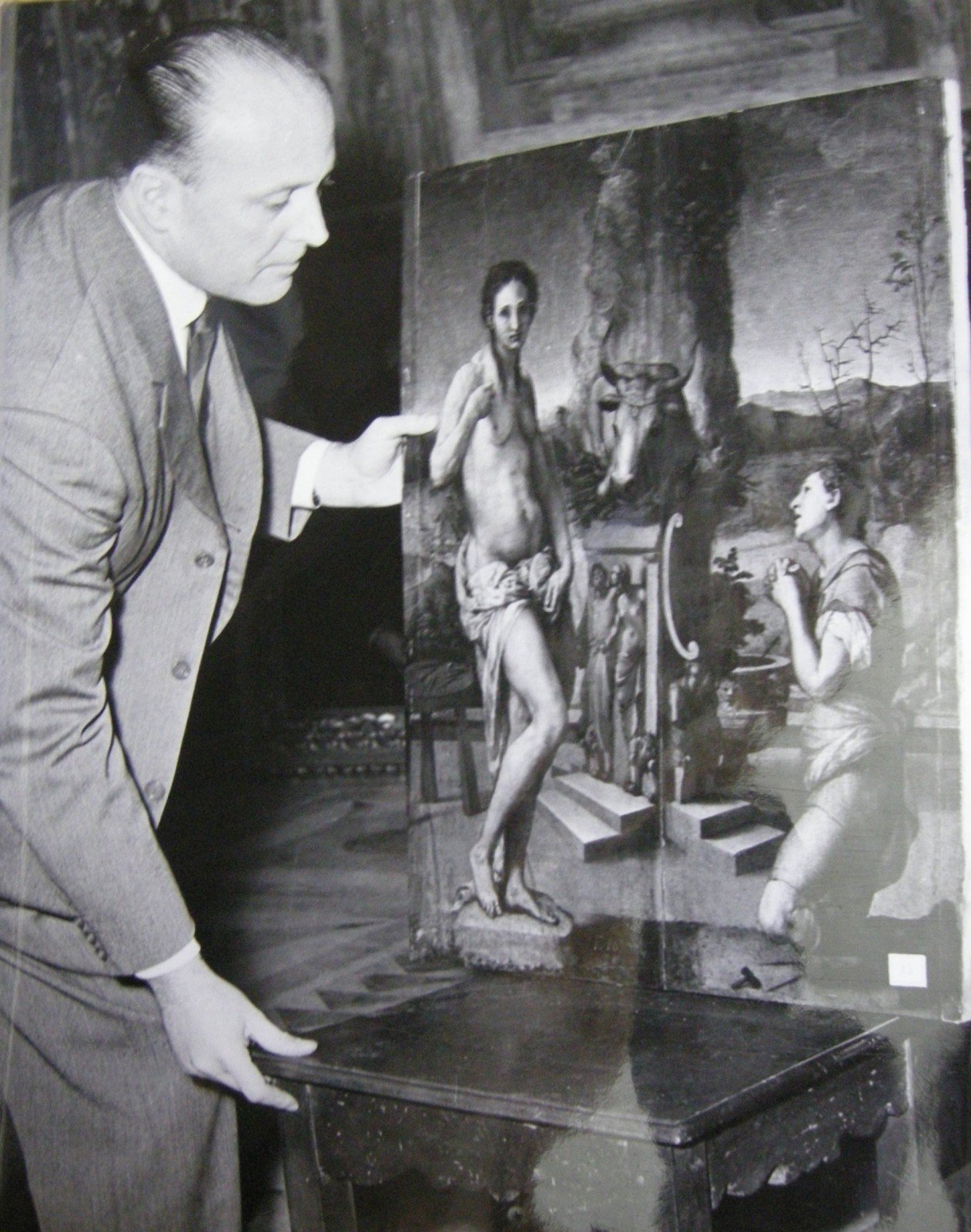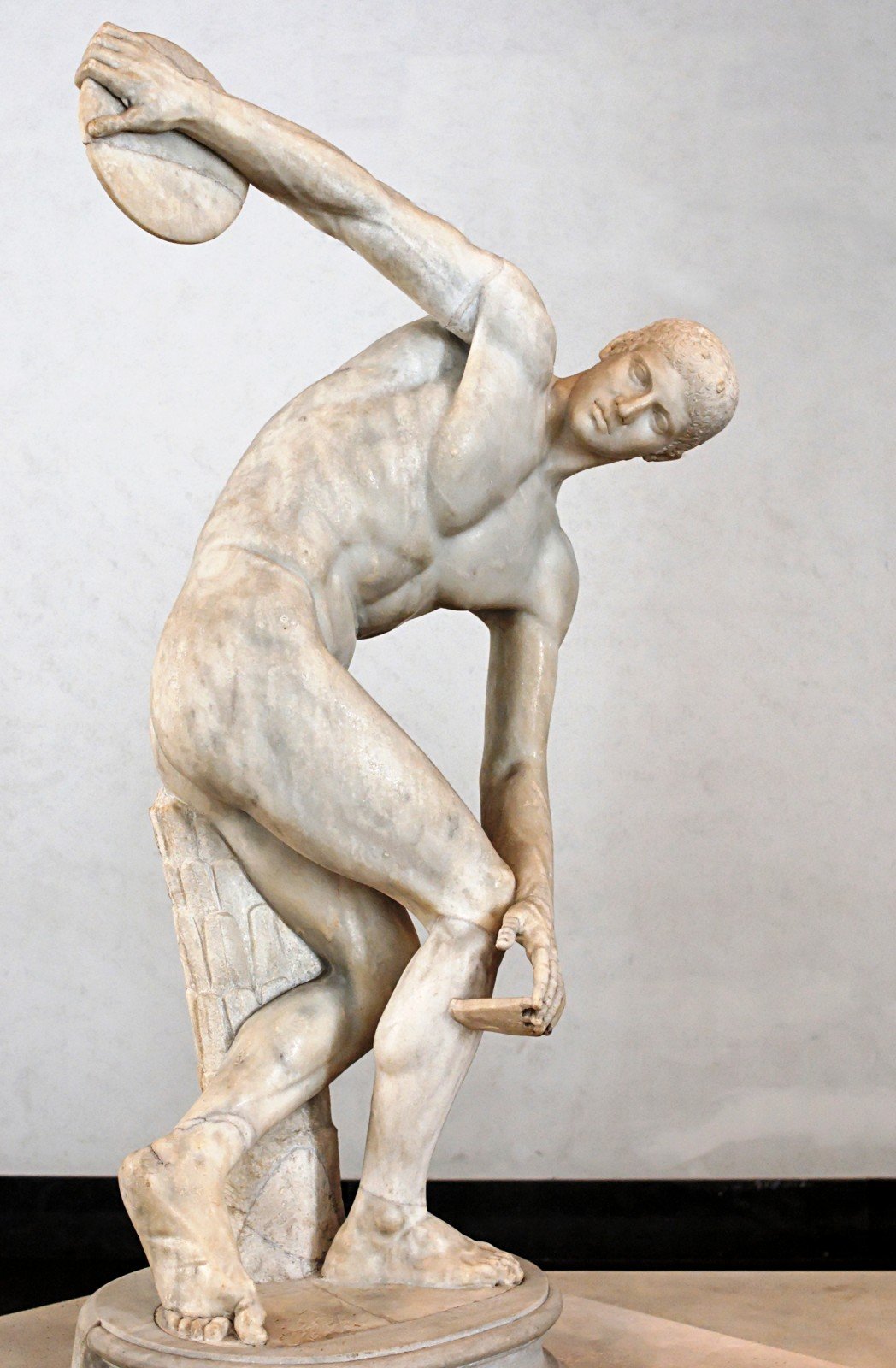Rodolfo Siviero: a 007 in the service of the Italian old masters
Here is how during the Second World War Rodolfo Siviero saved many Italian art treasures from the Nazi, and where George Clooney took inspiration for the Monuments Men movie.
Thanks to George Clooney, the legend of the monuments men – art historians and museum directors committed to save the Italian artistic heritage from the ravages of the Nazis – has been brought to the eyes of the public and has finally reached the Italians, too. Italians who often seem to forget their cultural patrimony. We take the chance to shed some lights on another forgotten hero, of that time, Rodolfo Siviero played a very important role during the Second World War. He recovered most of the works that had been purloined from Italy by Hitler’s looters. And this activity earned him the nickname of the Art 007.
- Rodolfo Siviero with a recovered work by Pontormo
- “Annunciation”, 1430-1432, Beato Angelico, tempera on panel, Museum of the Basilica of Santa Maria delle Grazie in San Giovanni Valdarno
- “Hercules and Antaeus,” 1475, Antonio del Pollaiuolo, tempera on panel, Uffizi, Florence
- “Hercules and the Hydra”, around 1475, Antonio del Pollaiuolo, tempera on panel, Uffizi, Florence
- “Discus Thrower” (Lancellotti), copy from Myron (455 BC), Marble, height 124 cm, National Museum of Roman Palazzo Massimo, Rome
When Rodolfo Siviero was young, he joined the Fascism. Like many of his peers, his adherence to Mussolini’s movement was based on the confidence that the system could revolutionise the country by improving it. However, when fascism introduced the Italian racial laws, which Rodolfo Siviero deemed as an affront to the Italian cultural tradition, he became an anti-fascist.
The aversion of Rodolfo Siviero for the Nazi-fascism increased more and more as a reaction to the flow of artworks that the Nazis, with the complicity of the fascist government, illegally exported from Italy to enrich their collections – and rise money for the war. After the German occupation, following the armistice of 8 September 1943, the theft of works turned into a real raid. The ‘Kunstschutz’, the German army, which was to protect the works of art, with the excuse of the danger of bombing, had begun to seize the Italian pieces and to transport them to Germany.
After the 8 September, Rodolfo Siviero became a point of reference of the British intelligence in Florence, as well as a collaborator of the partisans. In that period the building on the Lungarno Serristori, owned by the Jewish historian Giorgio Castelfranco and known as Casa Siviero, served as the operation center for the partisans fighting against the operations of the Kunstschutz. The life of art 007 doesn’t certainly lack of twists. Suspected by the fascist militias, Rodolfo Siviero was imprisoned and tortured from April to June 1944. He did however manage to resist interrogation and, thanks to the intervention of Republican officers who actually collaborated with the Anglo-Americans, was released and resumed his work as a secret agent.
After the Liberation, Rodolfo Siviero was chosen by the Italian government as the most suitable person to deal with the problem of returning the Italian works of art stolen during the war. With several diplomatic missions, he managed to obtain the return of many masterpieces, such as the works that had been taken away from the Abbey of Montecassino and the “Lancellotti Discus Thrower”, a Roman copy of Myron’s one. In 1953 Rodolfo Siviero also aided the Italian government to make a deal with Chancellor Adenauer of West Germany, thereby they returned all the works found in Germany at the end of the war. But his work does not end here. In the following years Siviero hunted the masterpieces which he had lost track of, such as the “Labors of Hercules” by Antonio del Pollaiuolo, now in the Uffizi.
However, the most important rescue performed by Rodolfo Siviero during the period of the German occupation is that of the “Annunciation” by Beato Angelico. The painting was in the Franciscan monastery of Monte Carlo in San Giovanni Valdarno. At the beginning of 1944, the Information Service of Rodolfo Siviero was aware that Goering wanted to have the masterpiece for his own collection and that the Kunstschutz had been instructed to take it to Germany. Rodolfo Siviero warned the Superintendent and two Franciscan friars of the convent of Piazza Savonarola in Florence withdrew and hid the work the day before the arrival of the German army. Thanks to this operation, the painting was safe. It is still preserved in the Museum of the Basilica of Santa Maria delle Grazie in San Giovanni Valdarno.
Rodolfo Siviero continued his work until death in 1983. But over the years he became more and more disappointed by the lack of attention that the Italian governments have addressed to the problems of restoration of the cultural heritage, as clearly evident from his diaries.
The last act of Rodolfo Siviero was a testament that bound his home and his collection to the region of Tuscany. They were turned into a museum in order to remember the values for which he fought all his life. Located in Florence, Lungarno Serristori, 1-3, his house-museum can be visited today, where you can see his collection: ancient works of art (Etruscan and Roman busts), fourteenth and fifteenth-century wooden statues; painted gold background, Renaissance and Baroque bronzes, pottery and liturgical furnishings. In addition, an important group of works by modern Italian artists such as Giorgio De Chirico, Giacomo Manzù, Ardengo Soffici, Pietro Annigoni. His heritage well documents the taste of the educated twentieth-century middle class in Florence. This taste, basically eclectic, also emerges from the introduction of a collection of poems by young Siviero, where he expressed one of his most firm beliefs: the close link between modern art and ancient art is an unbroken line that joins Michelangelo, De Chirico and Picasso.
February 18, 2014





